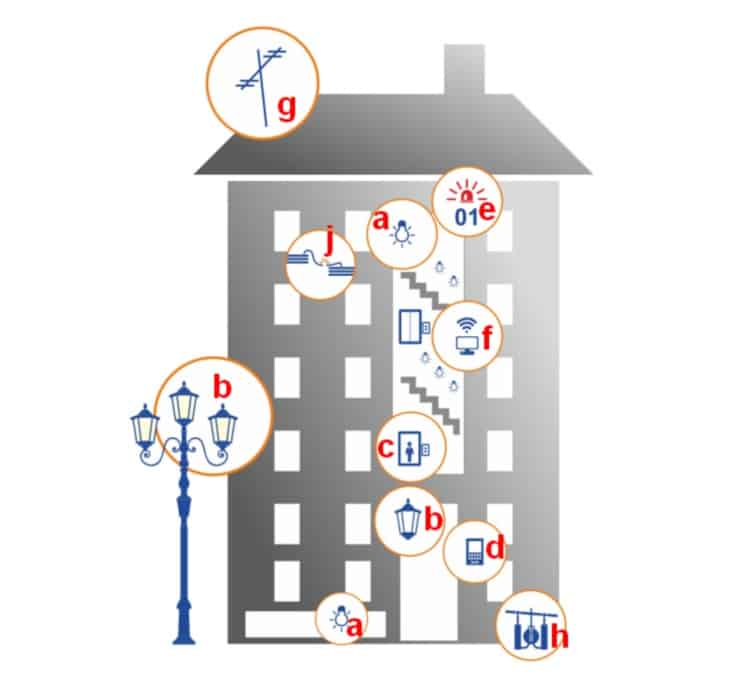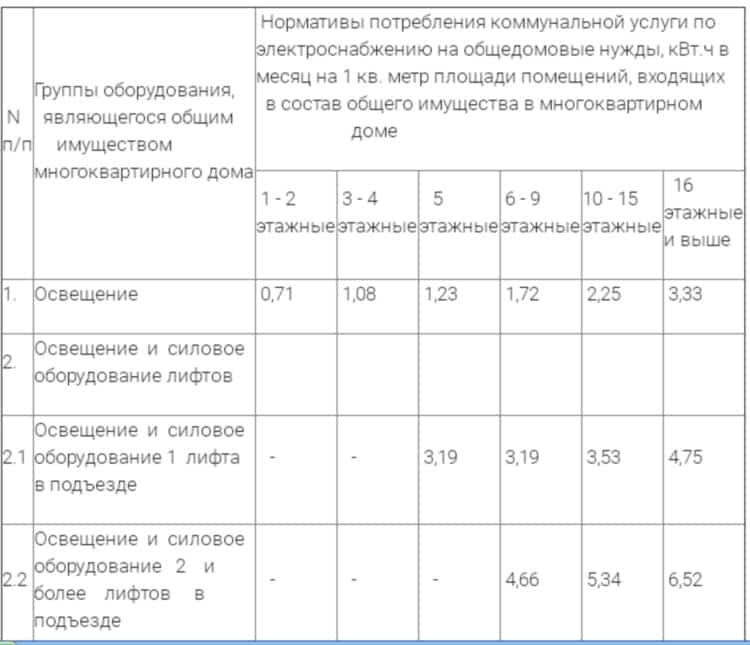Why are the tariffs for central heating and electricity the highest compared to other types of services? This situation is directly related to the huge losses in the networks of these utility resources and the lack of the possibility of prompt localization of the problem area. That is, the losses are initially included in the tariffs for consumers. Taking into account the current realities, a number of questions arise regarding the calculation of the RTO for electricity, we will try to find answers to them.
What is an EOD for electricity?
The easiest way to explain the meaning of this term is with an example. Suppose there is a typical apartment building connected to the power supply. The total cost in this case will include the following components:
- Electricity consumed by individual consumers.
- Electricity required to power the equipment of common house areas (lighting of landings, elevator equipment, technological losses on internal lines, etc.). This item of expenditure was called "common house needs" or abbreviated - ODN.
The expense for the first item is determined by. For the second, a special calculation is made, the results of which are reflected in the corresponding column of the receipt of utility bills.
What is included in the ODN?
Residents of apartment buildings, having received a receipt, which includes the payment of ODN, often wonder what this category of expenses includes. We will answer this question by citing a drawing for clarity, listing common house appliances.

Designations:
- a) Light fixtures in stairwells, attics and basements.
- b) Lighting systems for adjacent areas.
- c) Lift equipment.
- d) Security systems (intercoms, video surveillance, etc.).
- e) Fire alarm.
- f) Equipment providers.
- g) Antenna amplifiers.
- h) Pumping equipment.
- j).
Please note that the last point includes both losses of the intra-house network and unauthorized connections bypassing individual devices that take into account electricity consumption. That is, in this case, we can talk about the theft of electricity from housemates.
Payment for ODN
According to the Decree of the Government of the Russian Federation (No. 354), the entire volume of electricity consumed at ODN is paid by residents of an apartment building. In order to avoid discrepancies, we will quote verbatim an excerpt from the Decree.
 An example of an excerpt from the RF GD No. 354 dated May 6, 2011
An example of an excerpt from the RF GD No. 354 dated May 6, 2011 As you can see, the Decree determines that all electricity costs for ODN are borne by the owners of a residential building, regardless of the form of management chosen. Guided by this Decree, management companies calculate the volume of electricity consumption for general house needs, the results are entered into utility bills. An example of such a receipt was shown in Figure 1.
An example of calculating ODN for electricity in a multi-storey building
Despite the fact that tariffs and norms of electricity consumption differ in individual regions, the calculation formulas for calculating payments for the corresponding column remain unchanged. Let us give examples of calculations for an apartment building with a common house electricity consumption meter and an object where such a device is not available.
With counter
The calculation mechanism will be as follows:
- Readings are taken for a certain period from a common house metering device for electricity consumption. Let's say the collective meter displayed consumption in the amount of 6500 kilowatt-hours. In this case, this is the total electricity consumption of a residential building, which includes the total consumption of residential premises and the cost of ONE.
- At this stage, a comparison is made of the total readings taken from individual electricity meters and the data of a common house metering device. To perform this operation, you need to sum up the consumption of each apartment. As a rule, data for the reporting period is taken on certain days of the month. Such restrictions on the process of taking readings are necessary so that there are no large discrepancies in the balance sheet.
Let's imagine that the total value of all readings of the residents' electric meters was 5600 kilowatt-hours. That is, it is an indicator of the amount of electricity consumed by the owners of residential premises.
- Having received the indicator of consumption for residential premises, it is subtracted from the total amount of electricity consumed. The result will be the number of kilowatt-hours that fall on the share of ODN. In our case, the calculation will be as follows: 6500 - 5600 = 900.
- Now it is necessary to distribute (calculate) the ODN fee between the owners of the premises. Accruals are made to the owner based on the living space (ZHP) occupied by the apartment owners. For this operation, it is necessary to calculate the ratio between the square meter of ZhP and the unit of measure for the resource spent on general house needs (kilowatt-hour for electricity).
Let's go back to our example. Let's say the total living area in the house is 4200 m 2. Therefore, in order to calculate the ratio, it is necessary to divide the total consumption of ODN (in our case 900 kW * h) by the total amount of living space (4200 m 2), we get: 900/4200 ≈ 0.214 kW * h.
- Having calculated the ratio, it is easy to calculate the electricity consumption of ODN for any homeowner in the house. To do this, it is necessary to multiply the resulting coefficient by the living area of a particular apartment. For example, if the owner has 42 m 2 of living space, then the calculation of the consumption, in our example, will be as follows: 42 * 0.214 \u003d 8.988 kWh. Please note that the area of non-residential premises is not taken into account.
- At the final stage, the ODN fee is calculated, for this the result is multiplied by the tariff provided for the given region. Let's say our house is located in St. Petersburg, respectively, with a single rate of 4.32 rubles. per 1 kWh, the amount of payment will be as follows: 4.32 * 8.988 ≈ 38.83 rubles.
- Electricity consumption for general needs is paid.
Closing the topic of calculations in the presence of a MOS meter, it should be noted that the weakest link in this accounting system is taking readings from individual devices. This is directly related to the influence of the human factor, for example, information was transmitted with an error or it is not possible to take readings due to the absence of residents. You should also take into account the time required to enter data into a common database and possible operator errors. There are no such shortcomings in automated data collection systems. It will take only a few minutes to balance the electricity consumed by residents' networks, while guaranteeing one hundred percent accuracy.
Without counter
The above method for calculating the consumption of resources (electricity) for ODN is applicable only if there is a common meter. If this is not available, then the special standard provided for the given region is used as the coefficient necessary for calculating the use of electricity. The fee calculation principle is shown below.

Information on the calculated coefficient (standard) for a particular region can be obtained on the official website of the regional administration. In this case, the coefficient acts as a boundary value, its revision is possible only upwards. Such a decision can be made by a general meeting of tenants (if we are not mistaken, this has never happened in practice).
How profitable with or without a counter
As an example, let us cite the norms of electricity consumption for general house needs for the Nizhny Novgorod region.
 Norms of consumption of ODN in Nizhny Novgorod (for example)
Norms of consumption of ODN in Nizhny Novgorod (for example) If you track the thematic information regarding on local forums, it turns out that installing MOS devices is profitable, since in this case you have to pay less for utility resources spent on general needs.
The situation when a common electricity meter is installed, and the volume of consumption of communal resources exceeds the regional norm, is fundamentally impossible. In this case, everything points to the fact of the loss of resources due to the fault of the management company.
How to reduce ODN for electricity?
With the growth of consumption standards, the accrual of ODN also increases, we will give several options for solutions to reduce this item of expenditure. In most cases, the implementation of the above tips will require a general meeting of the residents of the house. Let's start with the main one:
- Install a common house meter. The amount spent on its purchase will pay off pretty quickly.
- If the transfer of information (taken from individual meters) is carried out to the supplier of the resource (electricity) after the key date, then the calculation of the consumption is made according to the regional norm. The same applies to the readings of common house devices.
- It is advisable to organize the process of removing information from the MOS meter in such a way that one of the residents appointed by the general meeting or an employee of the management company is present. The latter is extremely interested in this, because if the consumption exceeds the consumption standard, the financial responsibility lies with the management company.
- Organization of inspections of rented premises for unauthorized connection.
- Modernization of electrical equipment and general house electrical networks. Even replacing conventional incandescent lamps with energy-saving counterparts will give a tangible result.

